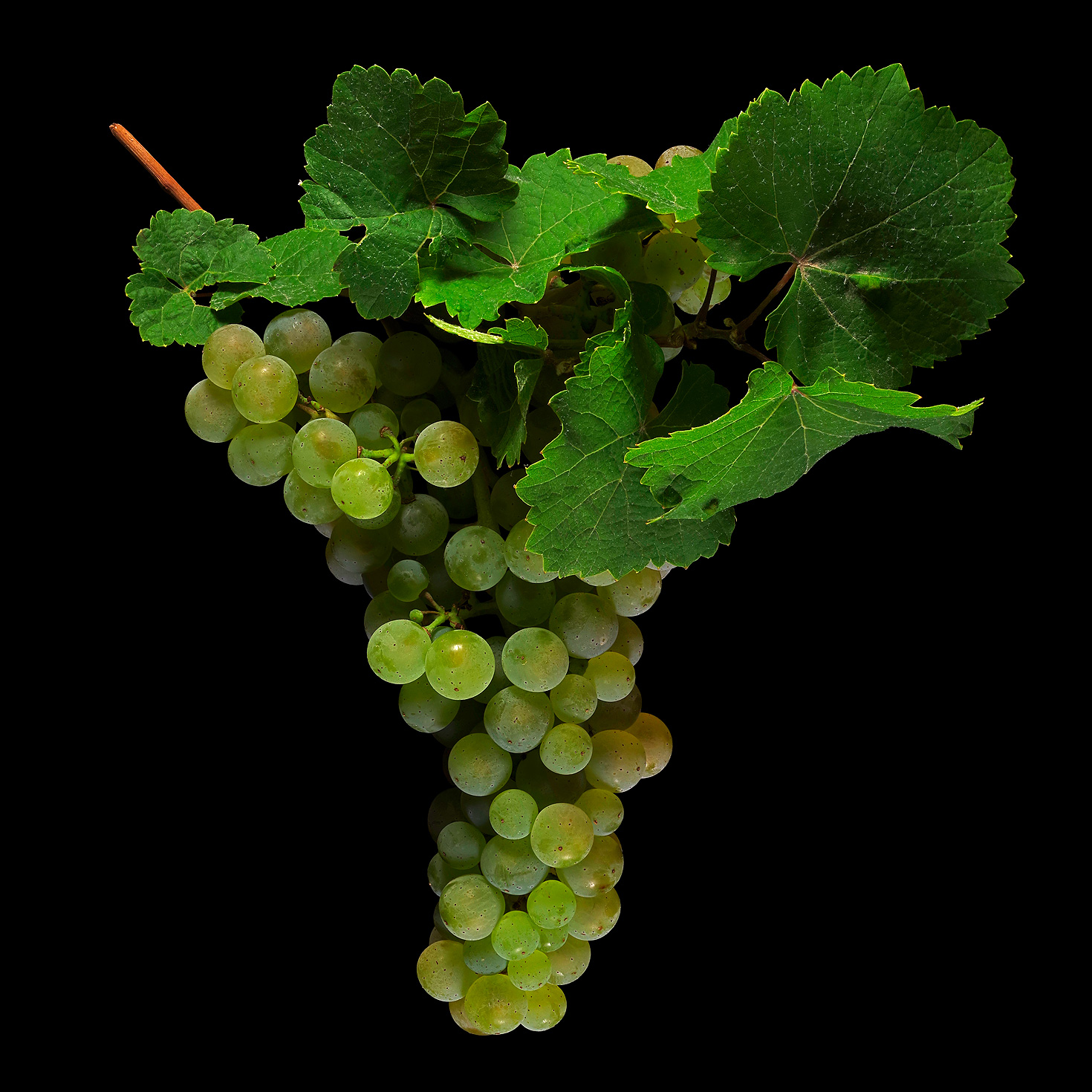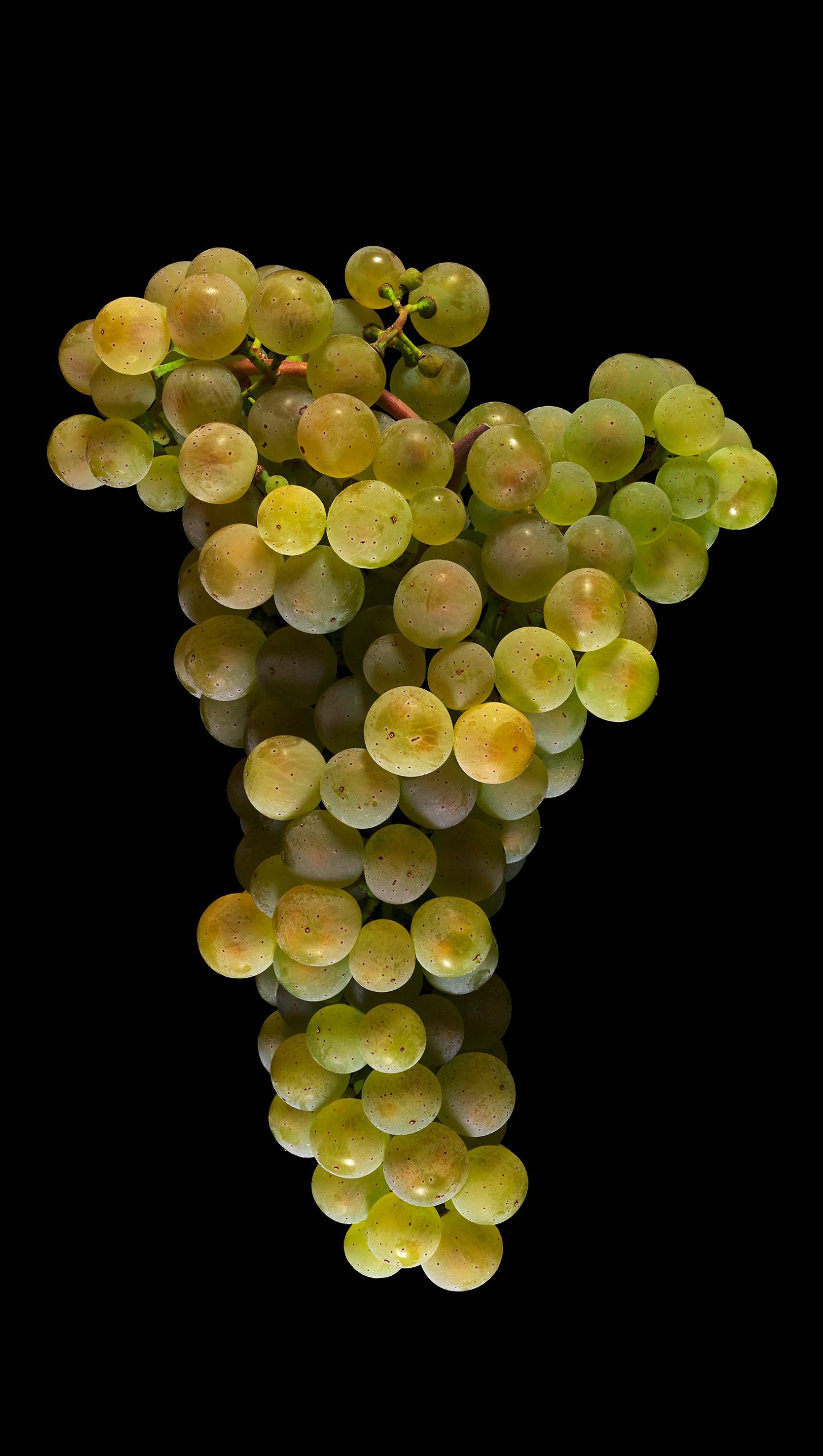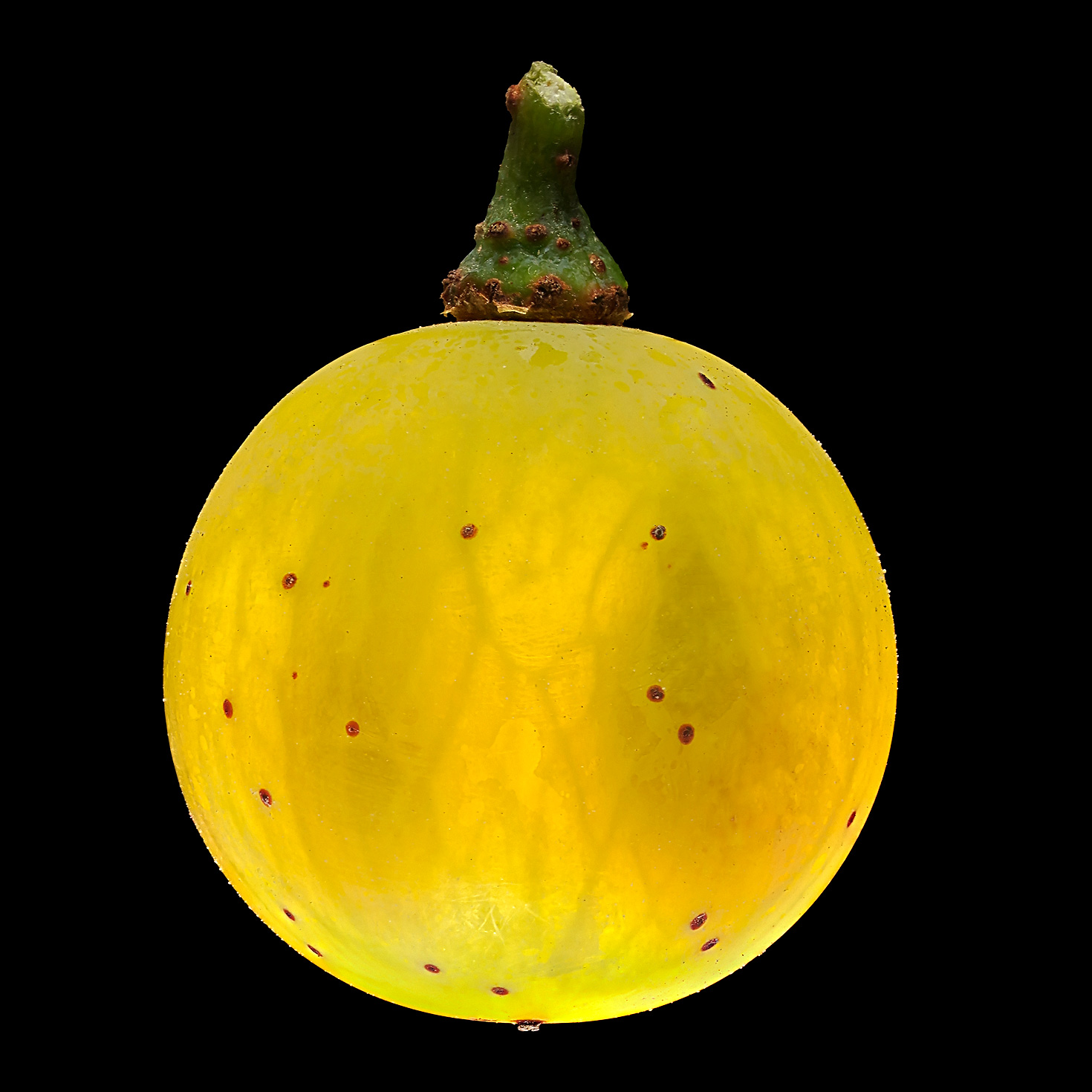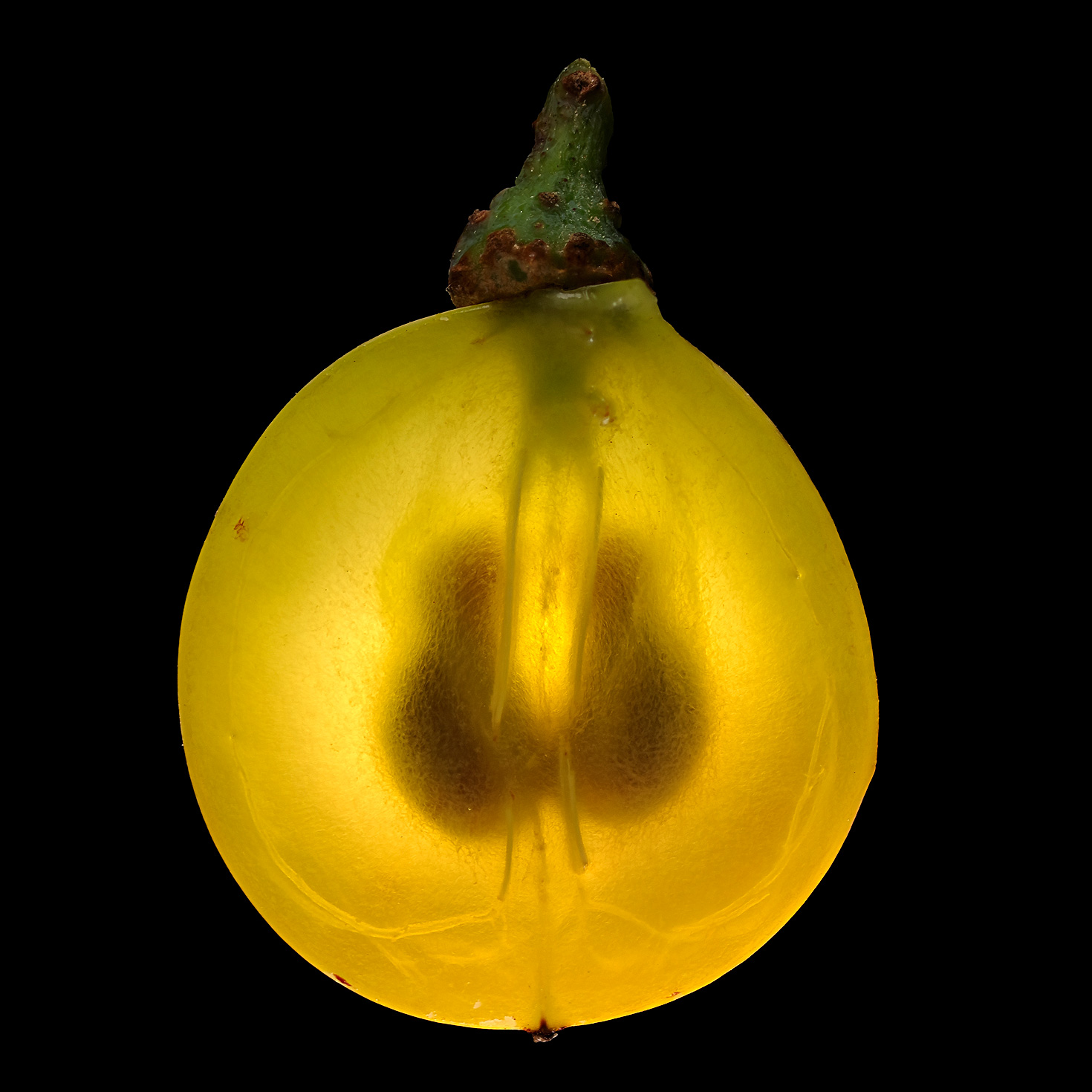Common Grape Vine (Riesling): Vitis vinifera subsp. vinifera
The most important wine variety in GermanyRiesling is an old white wine variety, which has the largest cultivation area among the grape vines in Germany. Riesling wines are of high quality and easily assume the character of their growing region. The later the grapes are harvested, the better the wine: the acidity is reduced, and the aroma is full and pronounced. Since Riesling wines have a rather high acidity overall, they are considered to have a good storability. Sparkling wines, ice wine and botrytized wines are also produced. Riesling is very frost-resistant. The berries are small and round, they remain green, but become more yellowish when fully ripe and exposed to good sunlight. They also can get small, dark spots like freckles. Numerous other varieties have originated from Riesling.
The grape vine is a subspecies of the vine that is mainly used for the production of wine. According to the colour of the leathery skin (the flesh is non-coloured in almost all varieties), white and red wine varieties are differentiated. Wine grows naturally as a liana, but in vineyards, due to constant trimming, it grows as a climbing shrub with shoots. Wine is one of the oldest cultivated plants of mankind, the oldest evidence dates back to 8000 BC and comes from the Near East.
The berries grow in loose infructescence and can be green, yellowish, red, purple and dark blue, some varieties have a pale wax bloom. After the vintage they are sold fresh as soft fruits (often seedless, loose, large-fruited varieties) or dried as raisins (depending on the variety also “sultanas”, “currants” and “Zante currants”). Vine leaves are edible as a vegetable, they are mostly used for wrapping e.g. spiced rice, as in the case of dolmades.
The main focus of viticulture is of course the production of wine, sparkling wine and champagne. Wine is used to make brandy, liqueur wines such as sherry, port and marsala, and vinegar. As by-products grape juice (must) and press cake (pomace, marc) are produced. Pomace brandies and wines such as Grappa, Marc de Champagne and Raki are produced from this, as well as pomace vinegar. Sometimes pomace, which is rich in minerals, vitamins and fibre, is added to bread dough and used to bake a special bread. A high quality oil is extracted from the seeds. From the pomace of the seeds, nutty tasting grape seed flour is produced, which can also be added to bread and pasta doughs.
- Edible Fruits
- Also edible Seeds Leaves
- Type of Fruit Berry
- Culinary Group Stimulants Soft fruits
- Also used as Oil plants
- Taste sweet
- Trivial Names Edle Weinrebe, Echte Weinrebe, Wein, Weinbeere, Weintraube, Common grape vine, Vigne cultivée, Vigne
- Trivial Names (type) Riesling, Edelriesling, Edle Gewuerztraube, Grauer Riesling, Grobriesling, Hochheimer, Johanisberger, Johannisberger Weisser, Riesler, Rieslingtraube, Rheinriesling, Rossling, Riesling Renano
- Size 23 cm
- Taxonomy Vitaceae Vitis vinifera subsp. vinifera; Heunisch × Vitis vinifera subsp. sylvestris × Traminer-Klon
- Origin Near East (Map)
- Donored by Weingut & Weinhaus Michel (link to donor) 2018






